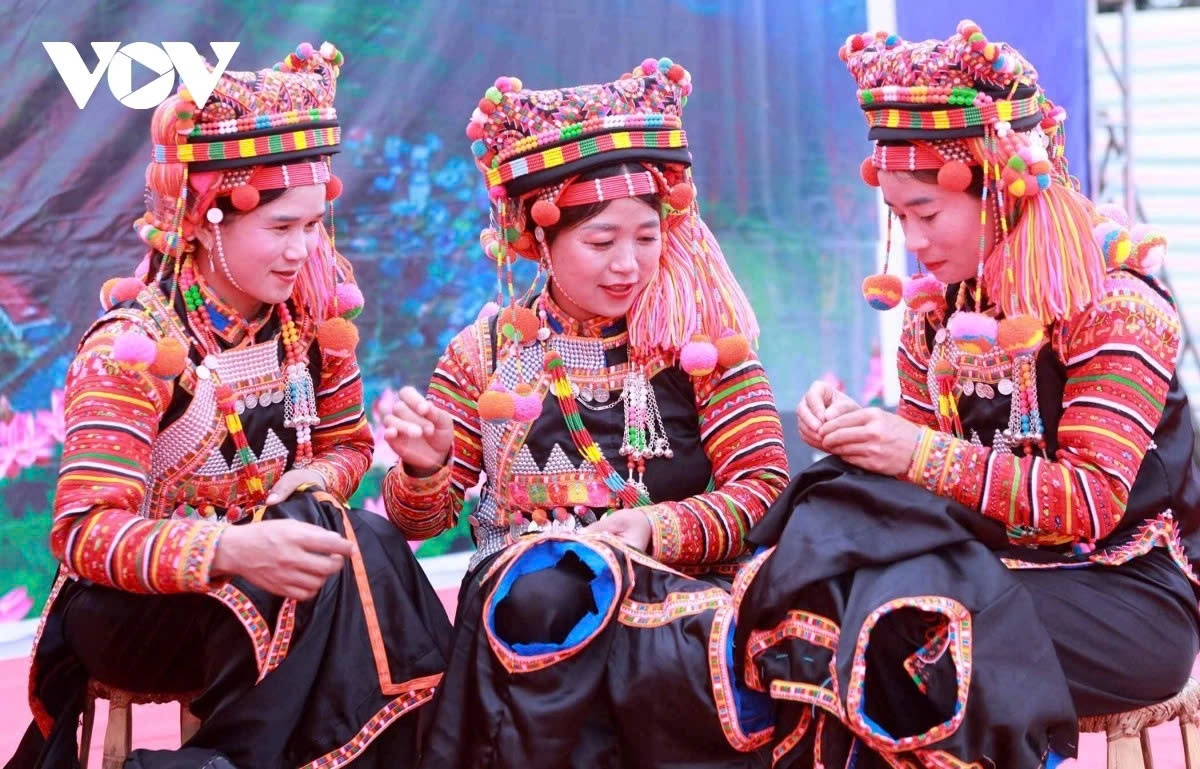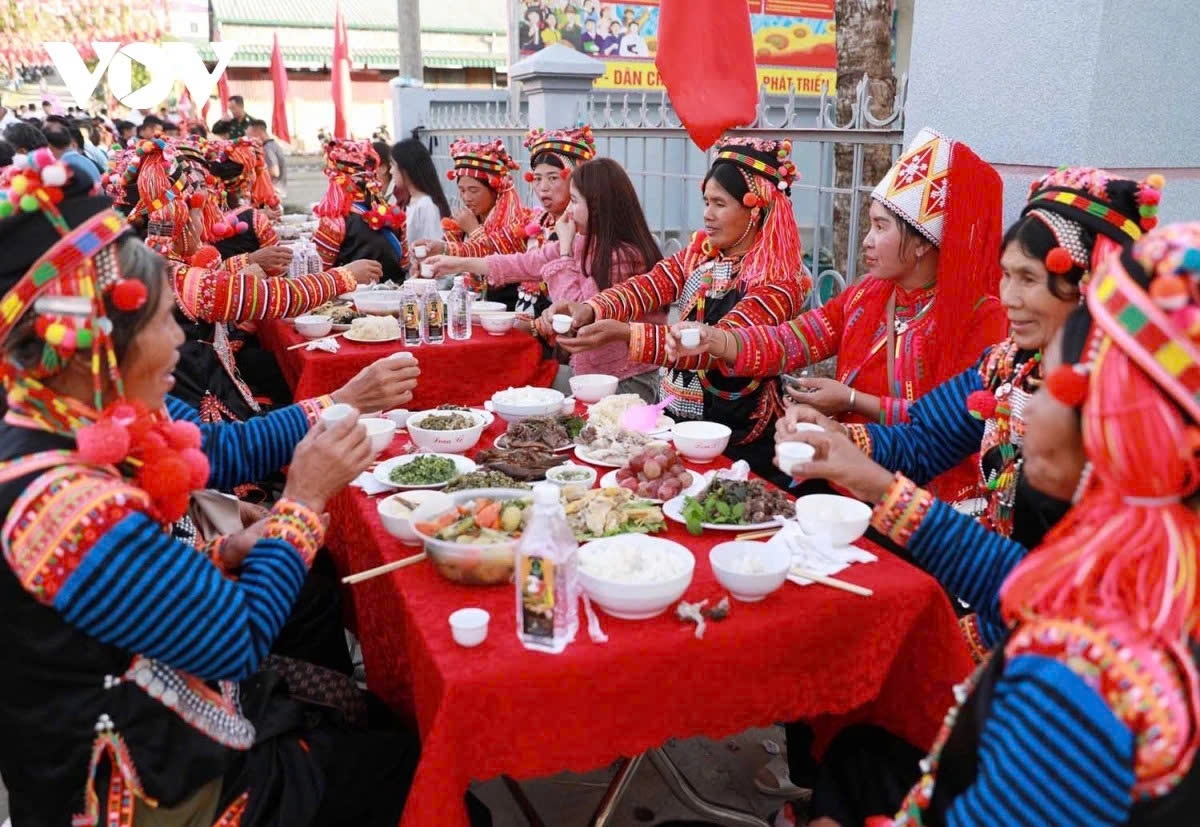Exploring the unique traditional New Year festival of the Ha Nhi
VOV.VN - The Ho Su Cha New Year of the Ha Nhi ethnic group in Thu Lum commune, northern Lai Chau province, is a distinctive traditional festival that has been preserved and passed down through generations.

More than just a time for reunion, the festival, traditionally held in the 10th lunar month of the year, is a vital cultural and spiritual event - a symbol of community solidarity and a foundation for developing local cultural and community-based tourism in this remote border region of Vietnam.
From early morning, Ka Lang village in Thu Lum commune bursts with laughter and joy. Smoke curls up from earthen-walled houses as the aroma of sticky rice cakes and corn wine fills the air. For the Ha Nhi, the Ho Su Cha New Year usually takes place on the first Dragon Day of the tenth lunar month. However, because this lunar year includes an intercalary month, the celebration was held a month earlier, coinciding with the completion of the harvest season, allowing families time to rest and reunite.

“When Ho Su Cha comes, we clean our houses, make sticky rice cakes, butcher pigs, and prepare offerings of meat, wine, and cakes to worship our ancestors and thank Heaven and Earth for a good harvest and healthy children. It’s the happiest time of the year, when everyone comes home,” shared Ly Xa Pu, a resident of Ka Lang village
This year’s celebration was not only a sacred traditional festival but also linked to a local Ethnic Cultural Day, turning the borderland commune into a colourful cultural space. In their bright traditional costumes, Ha Nhi women gathered to embroider skirts and blouses, while the men enthusiastically took part in traditional games such as crossbow shooting, tug-of-war, and “pao” throwing. The vibrant festivities attracted many visitors and residents from neighbouring villages.

“Before the New Year, our family prepared a pig to slaughter on the first day. After the pig is butchered, we check its liver to predict the next year’s harvest. During the festival, we prepare food, invite relatives and friends to visit, and welcome guests from afar to celebrate with us,” said Chu Te Hu, a resident from Me Giong village.
This year also marks the first Ho Su Cha celebration of Thu Lum commune since its administrative merger of Ka Lang and Thu Lum communes on July 1 under the two-tier local government model. In recent years, thanks to the attention of the Party and the State through national target programmes and development projects, life in this border region has changed significantly. Roads have been upgraded, national electricity grids have reached remote villages, and local living standards are steadily improving.

Nguyen Van Binh, a visitor from central Nghe An province, said, “Today, we truly felt the festive warmth and hospitality of the Ha Nhi people. They welcomed us like family, invited us to join their meals and dances. It was such a touching experience and I will definitely return to feel this wonderful New Year atmosphere again.”
According to Nguyen Truong Giang, Secretary of the Party Committee and Chairman of the People’s Council of Thu Lum commune, the commune covers nearly 252 square kilometers with more than 51 kilometers of borderlines and 17 villages. The Ha Nhi make up about 91% of the population, living in 15 villages, while the poverty and near-poverty rate remains around 55%.
The local Party Committee has defined “preserving cultural identity in association with developing community-based tourism” as a strategic goal for 2025–2030, considering the Ho Su Cha Festival an invaluable cultural asset for sustainable socio-economic development.

Meanwhile, the Lai Chau Border Guard Command has actively coordinated with local authorities to preserve cultural heritage and strengthen border security. Border guard Party members are assigned to participate in local Party cells, helping raise awareness among villagers about protecting cultural traditions and maintaining border stability.
The Ha Nhi communities on both sides of the Vietnam–China border share the same ethnic roots, and their traditional New Year provides an opportunity for cross-border cultural exchange and friendship.
Amid the beating drums, the sound of gongs, and the aroma of corn wine and sticky rice cakes, the Ha Nhi people of Thu Lum commune send their wishes for peace and prosperity into the new year. At the headwaters of the Da River, the spring comes early to this borderland, bringing with it the rustic yet enduring cultural colours of the Ha Nhi as warm and steadfast as the hearts of those living on the westernmost edge of the country.





